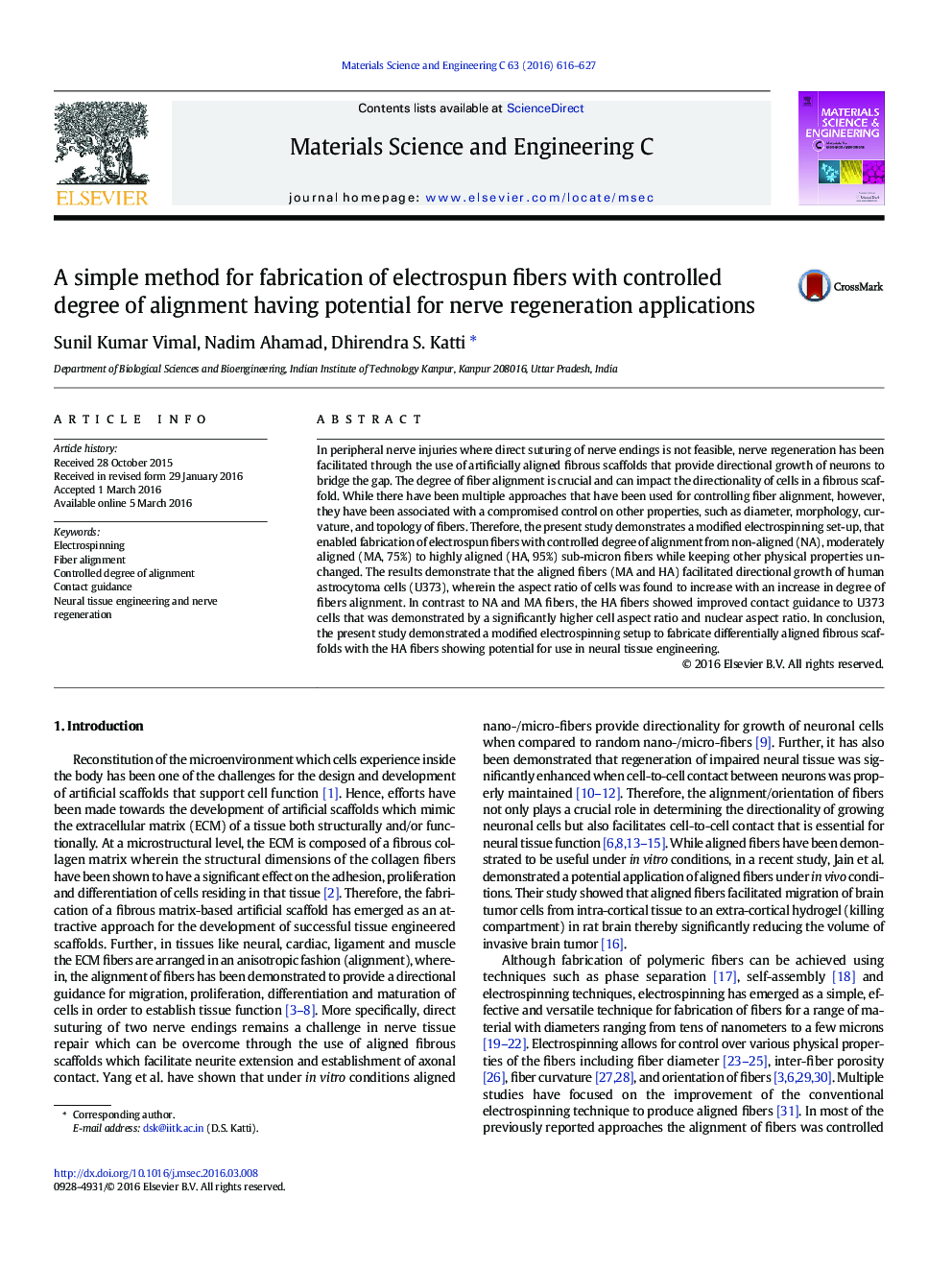| Article ID | Journal | Published Year | Pages | File Type |
|---|---|---|---|---|
| 1428055 | Materials Science and Engineering: C | 2016 | 12 Pages |
•Modified electrospinning set-up for fabrication of fibers with controlled alignment•Three parameter-based control on the degree of alignment of fibers•The aligned fibers enhanced cell elongation and cell-cell contact.•The aligned fibers show potential for use in nerve regeneration.
In peripheral nerve injuries where direct suturing of nerve endings is not feasible, nerve regeneration has been facilitated through the use of artificially aligned fibrous scaffolds that provide directional growth of neurons to bridge the gap. The degree of fiber alignment is crucial and can impact the directionality of cells in a fibrous scaffold. While there have been multiple approaches that have been used for controlling fiber alignment, however, they have been associated with a compromised control on other properties, such as diameter, morphology, curvature, and topology of fibers. Therefore, the present study demonstrates a modified electrospinning set-up, that enabled fabrication of electrospun fibers with controlled degree of alignment from non-aligned (NA), moderately aligned (MA, 75%) to highly aligned (HA, 95%) sub-micron fibers while keeping other physical properties unchanged. The results demonstrate that the aligned fibers (MA and HA) facilitated directional growth of human astrocytoma cells (U373), wherein the aspect ratio of cells was found to increase with an increase in degree of fibers alignment. In contrast to NA and MA fibers, the HA fibers showed improved contact guidance to U373 cells that was demonstrated by a significantly higher cell aspect ratio and nuclear aspect ratio. In conclusion, the present study demonstrated a modified electrospinning setup to fabricate differentially aligned fibrous scaffolds with the HA fibers showing potential for use in neural tissue engineering.
Graphical abstractFigure optionsDownload full-size imageDownload as PowerPoint slide
